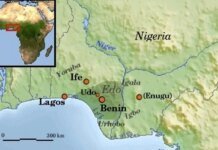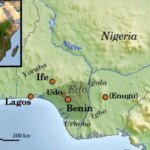Noah Sheidlower/Business Insider
- Yosemite National Park remains open despite the ongoing government shutdown.
- Though most national parks are open, they're operating with limited staff and services.
- I visited Yosemite at the start of the shutdown and found most things felt pretty normal.
When I visited Yosemite National Park shortly after the government shutdown, I expected it to be deserted. I wasn't expecting it to be quite packed — and free.
My trip to the area with friends was about a week afterthe government shut down on October 1.
We were worried our plans of hiking and exploring Yosemite's many scenic points would fall through, as we'd read that the shutdown would impact national parks nationwide.
While the military and federal law enforcement are being paid, employees at most other agencies — including many national park workers — are either working without pay or are furloughed.
Though each national park has handled the shutdown differently, most are open with very limited staff. Yosemite and its campgrounds and hotels are open to the public, though there are no staff at the gates, and some services are limited.
All that said, my experience at Yosemite was surprisingly pleasant with just a few drawbacks.
Before heading out, we prepared an informal backup plan.
Noah Sheidlower/Business Insider
As Business Insider reporter Kelsey Vlamis did when she recently visited two California national parks during the shutdown, we also made a backup plan before our trip.
We anticipated potentially not having access to maps or certain resources, so we downloaded hiking routes on our phones and planned several different driving routes.
Additionally, we researched alternative activities in the area in case the park was too crowded or certain parts were closed off.
We packed extra water, a small supply of toilet paper, and some toiletries that we worried might not be restocked in the park's bathrooms or that we wouldn't be able to buy if the shops were closed.
We did not have to pay to enter.
Noah Sheidlower/Business Insider
With no employees working at Yosemite's entrances, we drove right in without having to pay the $35 fee per car.
It was a welcome surprise, as we were trying to remain cost-conscious this trip, though I'm sure my dollars would've been put to good use for facility maintenance and improvements.
The park wasn't as empty nor quite as packed as I expected.
Noah Sheidlower/Business Insider
When I visited Yosemite on a Monday and Tuesday, I found more crowds than I anticipated, as I thought some uncertainty of the shutdown's impact would've deterred more visitors.
The park had life to it, especially wherever the iconic El Capitan and Half Dome landmarks were visible, but some of the more popular trails hosted just a few other hikers.
Although the lack of an entrance fee might've drawn some visitors in, the park never felt that crowded. At times, I didn't see another car for several miles.
Considering October is typically one of the busiest months at Yosemite, I suspect there were fewer people at some of the most popular locations than would've been the case without a shutdown.
When we walked the Sentinel Dome and Taft Point Loop, a roughly 5-mile hike, the trails were nearly empty aside from the three dozen or so people we spotted at the two viewpoints.
Regardless of the time of day, most parking areas for lookout points or trail entrances had at least a few available spaces.
Since we didn't have to wait for parking spots or push through crowds, we were able to do virtually everything we wanted on our trip. It was a pleasant surprise.
Without many park rangers to help us, we mostly relied on our phones' GPS.
Noah Sheidlower/Business Insider
As expected, several welcome centers run by the National Park Service (NPS) were closed.
However, we weren't too worried about finding food or essentials nearby because the nature center, bookstores, gas stations, and gift shops within the park were open.
We didn't get a map when we arrived, but I did notice some available at a gas station in the park.
Fortunately, we'd already had maps and routes downloaded on our phones. I'm glad we did, since there was no cell service throughout a lot of the park.
We sometimes felt unsure of exactly where to go or how to access some trail entrances, so it would've been nice to be able to ask park rangers for help or recommendations, but we didn't see many throughout our trip.
I spotted some Yosemite Conservancy staff throughout the park, as well as some wildfire workers, though. We didn't speak with them, but it was reassuring to think that they might've been able to help us in the case of an emergency.
The trails and bathrooms were open, and most hikers we saw seemed to be following the rules.
Noah Sheidlower/Business Insider
According to the Yosemite Conservancy, bathrooms are still being cleaned and trash is still being taken out during the shutdown. The bathrooms were indeed open, and the ones we used were stocked with toilet paper.
We hadn't heard of any trail closures during our trip, and we did a few shorter hikes.
The trails seemed nearly pristine. Despite fewer rangers around to enforce the rules, it seemed like people were following the park's advice to "Leave No Trace" and stay only on the designated trails.
Most of the hikers we passed seemed to be respecting the surroundings and rules. However, we did spot several dogs in areas where they're usually not allowed.
Hotels and campgrounds in the park were still open.
Noah Sheidlower/Business Insider
We were nervous about how the shutdown might impact our accommodations for the night, but reservations at hotels or campgrounds in the park are still being honored.
We stayed at Curry Village, a historic hotel that has been operating in Yosemite Valley since 1899. The parking lot was filled, and people seemed to be occupying most of the tents.
We stayed in a non-heated tent, which was quite chilly but not unbearable. The shared bathrooms and showers felt decently clean.
As far as I could tell, everything on the property was open and operating at normal hours. The restaurants, gift shop, and shared facilities felt very packed.
Though our hotel in the park was bustling, some of the businesses on the outskirts of it looked relatively empty.
I briefly asked a few workers at concession places within and outside the park if they had noticed the shutdown impacting business in any way, and they said they've noticed a decrease in foot traffic.
Our experience in Yosemite was pretty great, but the shutdown still impacted parts of our trip.
Noah Sheidlower/Business Insider
Though Yosemite was open and we were able to have a positive experience at the park, the shutdown affected some of the other places we wanted to visit during our Bay Area trip.
Muir Woods National Monument, an NPS site known for its redwood forests in Marin County, was closed amid the shutdown. Most parts of the Golden Gate National Recreation Area were open, though Fort Mason's headquarters, China Beach, and some parking lots by the Presidio were closed.
I didn't feel much of the impact at Yosemite, but it's just one of dozens of national parks and historic sites enduring the shutdown — and this is just my experience.
Though I didn't see any of this firsthand, videos and reports suggest that people have begun squatting, using drones, and performing dangerous illegal stunts at Yosemite.
Some have pushed for national parks to close because they're concerned that there are not enough employees to care for the resources or deal with rule breakers on the properties.
The impact on local businesses and the parks may not be immediately visible to all visitors, but some suggest the costs could be major.
The National Parks Conservation Association has estimated "that local economies could lose as much as $80 million in visitor spending every day parks are closed in October."
It's unclear when the shutdown may come to an end, but if it continues, I suspect my experience may not be the same as that of other visitors.
Read the original article on Business Insider

































